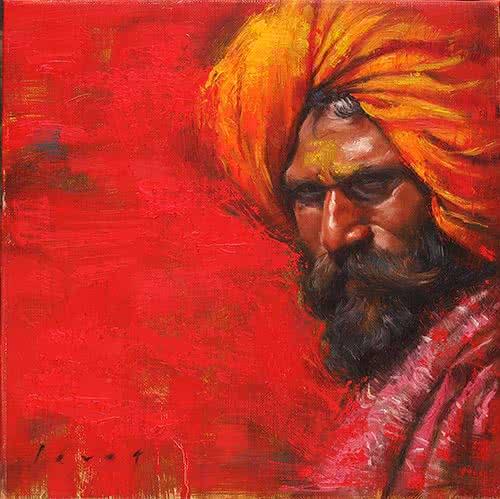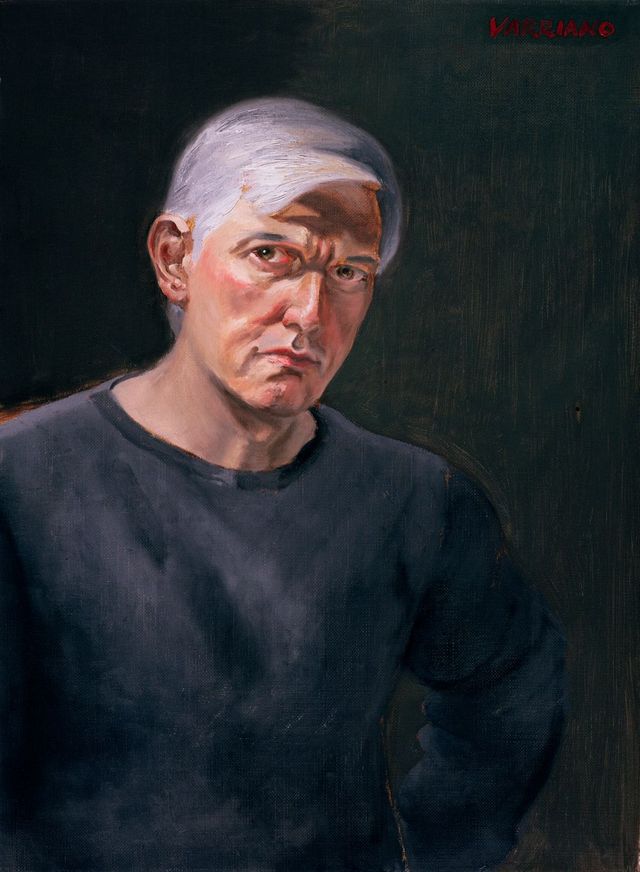Exploring the Depths of Feeling with Figurative Oil Painting Methods
Exploring the Depths of Feeling with Figurative Oil Painting Methods
Blog Article
The Development of Metaphorical Oil Painting: Comprehending Its Historical Relevance and Modern Interpretations
The evolution of metaphorical oil paint works as a compelling lens via which to take a look at the interplay in between artistic expression and historic context. From the precise naturalism of the Renaissance to the stirring power of the Baroque, each era has actually added layers of significance and method to this timeless medium. Contemporary artists, attracting from this rich heritage, are now reinterpreting the human number in manner ins which challenge typical narratives. As we discover these improvements, one should consider just how the dialogue in between existing and past informs not just creative technique but additionally societal reflections in an increasingly complicated world.
Beginnings of Figurative Oil Paint
The origins of figurative oil paint can be mapped back to the very early Renaissance in Europe, particularly in the 15th century. The growth of oil paint permitted for greater depth of color and detail, improving the realistic look and vibrancy of their job.

In this transformative period, numbers were often portrayed within contextually rich environments, showcasing not just their physical features however likewise their psychological states. Leaders such as Jan van Eyck and Titian used the tool's flexibility, employing layering strategies to attain brightness and texture. This innovation promoted the representation of elaborate fabrics and the nuances of skin tones, adding to the growth of portrait and narrative scenes.
Moreover, the Renaissance emphasis on humanism promoted an admiration for individualism, which consequently affected musicians to develop more relatable and dynamic figures - figurative oil painting. Consequently, figurative oil paint became an effective lorry for narration and emotional interaction, preparing for future imaginative movements and designs
Key Historic Movements
Considerable historical activities have formed the advancement of figurative oil paint, each contributing special philosophies and methods that expanded the medium's possibilities. The Renaissance marked a turning point, emphasizing realistic look and the human form, with artists like Leonardo da Vinci and Michelangelo pressing the borders of anatomical precision and point of view. Following this, the Baroque era brought remarkable contrasts of light and darkness, exemplified by Caravaggio, who instilled spiritual themes with intense emotionality.
The 19th century presented Romanticism and Realistic look, where artists such as Delacroix and Courbet challenged timeless ideals, focusing on private expression and day-to-day life. The advent of Impressionism even more changed the tool by emphasizing the impacts of light and color, causing a separation from conventional representation.
In the very early 20th century, activities like Expressionism and Cubism redefined metaphorical paint via abstraction and the exploration of emotional deepness. Each of these motions not just mirrored the social adjustments of their times but additionally prepared for modern analyses. The interaction between these historic movements has created a rich tapestry of approaches and designs, influencing contemporary artists in their quest of catching the human experience on canvas.
Methods and Materials Development

Throughout the Baroque period, methods such as chiaroscuro and sfumato arised, boosting the psychological resonance of figurative make-ups. Musicians started to explore glazes and impasto, controling texture and luminance. By the 19th century, developments like using pre-mixed paints in tubes reinvented accessibility, enabling musicians to paint en plein air and catch the fleeting impacts of light.
The 20th century witnessed the introduction of artificial pigments and mediums, which broadened the scheme and altered the uniformity of click this link oil paints. Moreover, the exploration of brand-new application techniques, such as combination blades and brushes of varying tightness, more diversified creative expression. Collectively, these developments mirror the evolving relationship between products, strategies, and the artistic vision fundamental in figurative oil paint.

Contemporary Interpretations
Contemporary interpretations of figurative oil paint mirror a vibrant discussion in between practice and technology, where musicians test established norms and explore diverse go to the website themes. This evolution manifests in numerous means, as modern musicians blend classic techniques with modern concepts, often addressing social, political, and personal stories.
Lots of professionals draw inspiration from historical jobs, yet they instill their pieces with contemporary viewpoints, making use of the human type as a car for discourse on identity, society, and gender. Artists increasingly trying out abstraction, distortion, and combined media, which permits a more comprehensive analysis of the figure and its context.
Moreover, making use of brilliant color schemes and unique structures typically serves to interfere with standard Resources viewing experiences, prompting vital involvement from target markets. This shift in emphasis extends past visual appeals; it mirrors a growing awareness of the intricacies of human experience in an interconnected world.
As figurative oil paint continues to evolve, it stays a vital medium for discovering the nuances of modern life, embodying both a regard for heritage and a dedication to modern idea. The result is an abundant tapestry of expression that reverberates with the complexities of the contemporary human problem.
Effect On Modern Art
The influence of figurative oil painting on contemporary art is extensive, as it has actually continually influenced a myriad of creative activities and practices throughout the 20th and 21st centuries. From Expressionism to Surrealism and beyond, the exploration of the human figure has actually continued to be a main motif, allowing artists to convey complicated emotions and narratives. This focus on metaphorical representation has caused a re-examination of standard techniques, causing cutting-edge methods that blend realism with abstraction.
In addition, contemporary artists have actually accepted metaphorical oil painting as a way to attend to social and political problems, using the medium to challenge perceptions of society, identification, and gender. The rebirth of passion in metaphorical operate in current years shows a yearning for connection in an increasingly electronic globe, where human experience and emotion are critical.
Additionally, the dialogue in between metaphorical oil painting and modern art is noticeable in the jobs of artists such as Kehinde Wiley and Jenny Saville, who make use of historic references while instilling their items with contemporary relevance. Inevitably, metaphorical oil painting remains to shape and redefine modern imaginative expression, highlighting its enduring value in the art globe.
Final Thought
The advancement of figurative oil painting emphasizes its historical relevance and flexibility across different imaginative movements. Inevitably, metaphorical oil paint remains a crucial tool for checking out the human experience, resonating exceptionally in today's electronic landscape.
The evolution of figurative oil painting offers as an engaging lens through which to analyze the interplay between creative expression and historical context.Substantial historic movements have formed the advancement of metaphorical oil painting, each contributing distinct approaches and strategies that increased the tool's opportunities.As historic activities formed the trajectory of figurative oil paint, the materials and methods utilized by musicians have actually likewise undertaken substantial changes. figurative oil painting.The effect of figurative oil painting on contemporary art is profound, as it has continuously influenced a myriad of creative motions and methods throughout the 20th and 21st centuries.The evolution of figurative oil painting underscores its historical significance and adaptability across various imaginative activities
Report this page